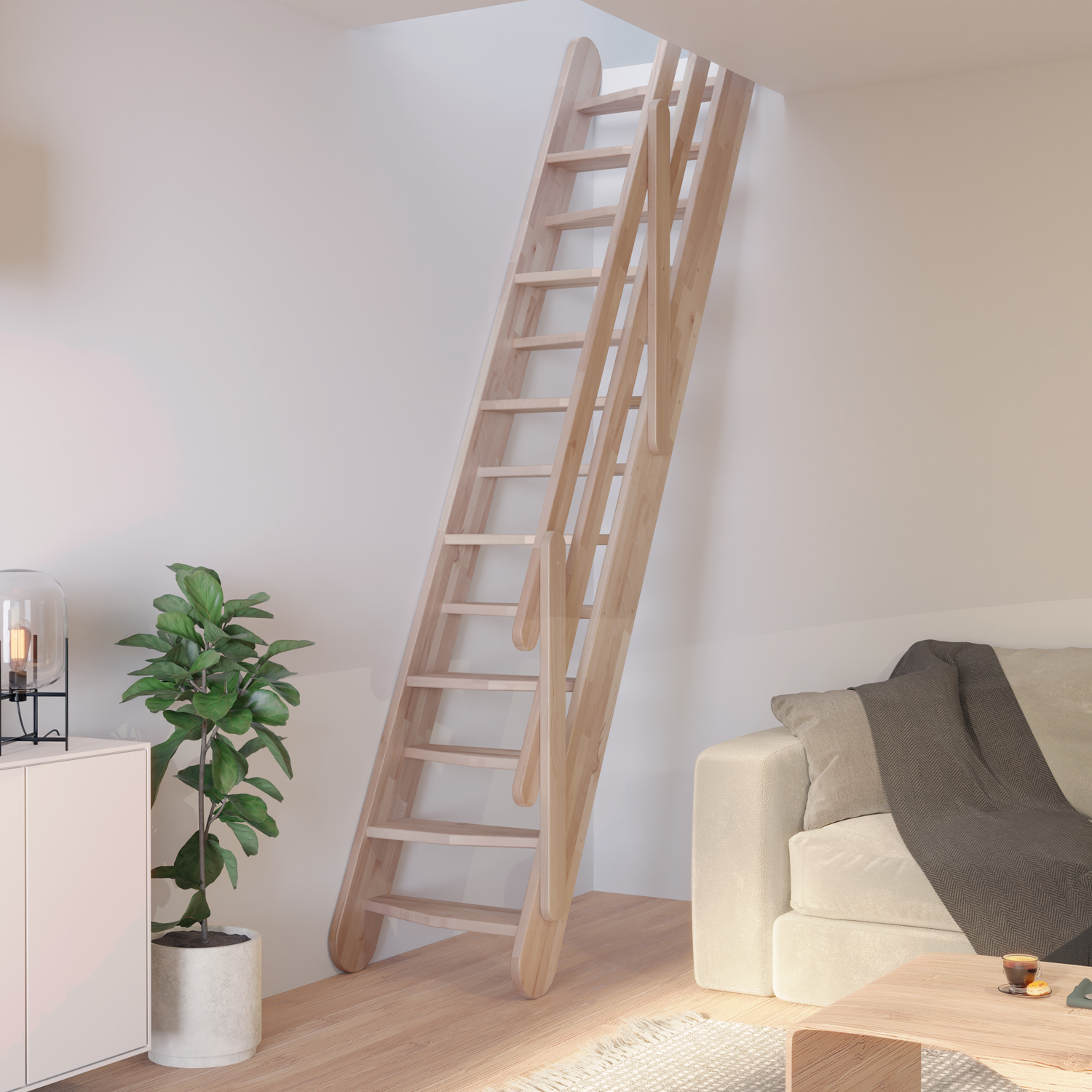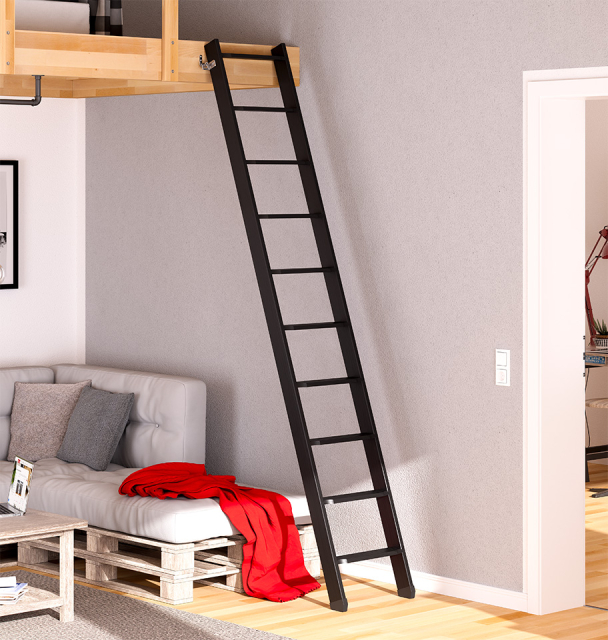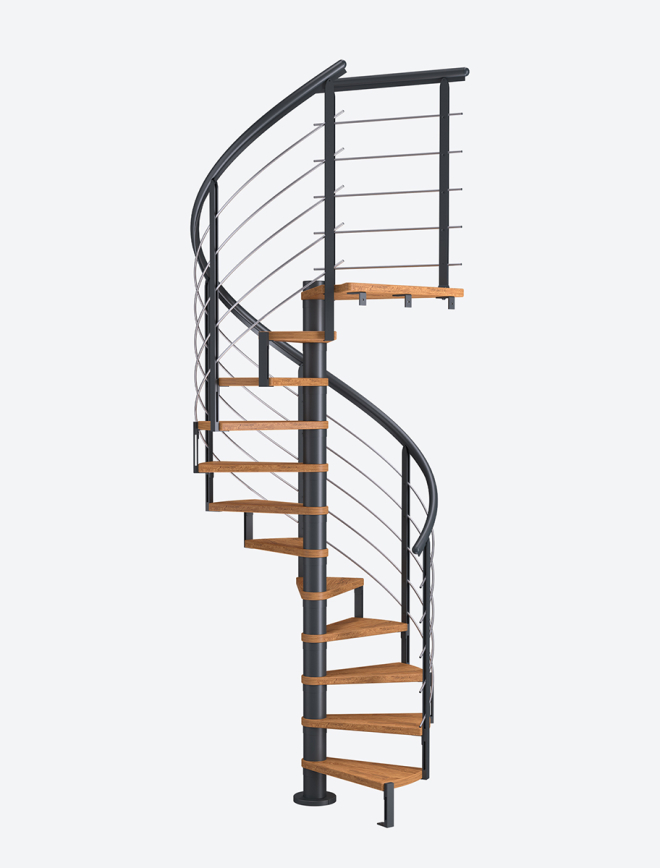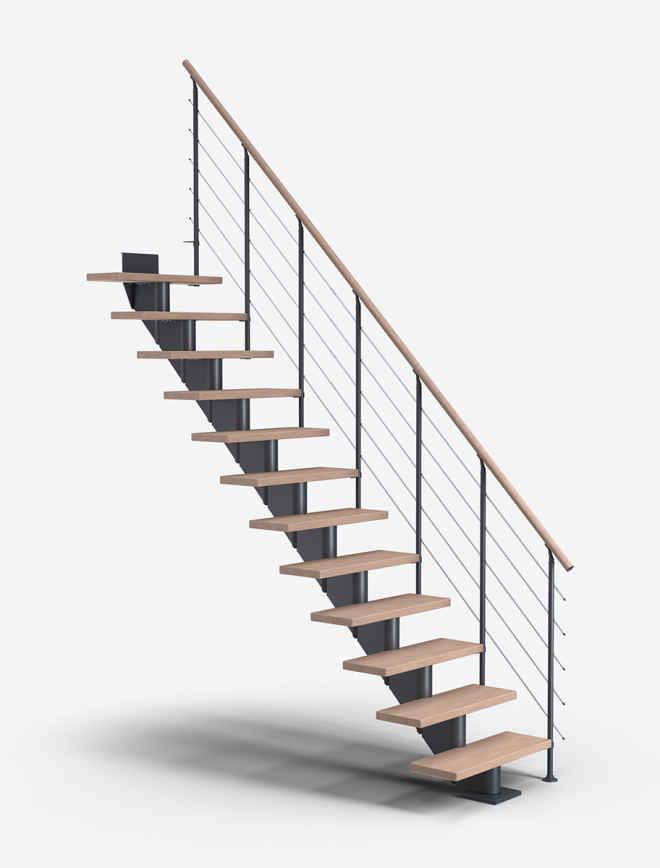Staircases
At DOLLE, we provide a diverse selection of indoor and outdoor staircases, including main staircases, spiral staircases, loft stairs, and space-saving options. Each of our staircases is designed to maximize space efficiency in your home
Types of Stairs
Space saving staircases
Our space-saving staircases are designed to fit into tight corners and small spaces, perfect for accessing upper floors with limited room. They feature a modular design for easy installation and come in compact sizes, including models with turn and reverse treads. Our narrowest options are minimalist in design, while the modular staircases offer additional comfort if space allows. Ideal for narrow spaces, our range provides practical solutions for maximizing your home's layout.




Spiral staircases
DOLLE have been supplying staircases globally for over 50 years, here you can view our wide range of modern spiral staircases and landing banisters to match. Our modern Scandinavian-inspired designs, finished in high quality materials and you can choose from a range of modern colours.
Wood staircases
Staircases in wood are classic style - they bring warmth and naturalness to our home. Whether classic or country style – at DOLLE you will find the right wooden staircase for your interior. Our range includes solid wood stairs and room-saving stairs. Our wood stair is shorter and has a smaller discharge, it is thus designed to take up less space in the home. Our wood stairs are available both as straight flight stairs and quarter turn (winder stairs).




Loft stairs and mezzanine
Our famous loft stairs and mezzanine stairs are a simple and elegant solution that contributes to the atmosphere of the home without taking up much space. The mezzanine stairs in wood are often with staggered treads. See the wide selection both with and without banister. All our loft stairs are produced in high quality.
Outdoor staircases
At DOLLE we have been supplying staircases globally for over 50 years. We have a good range of outdoor staircases for you to choose from, we aim to make the most of the space. We focus on high quality, material options, strength, and comfort. All our outdoor staircases are made with high grade galvanised steel, and you can choose from our TORONTO spiral staircase or our straight flight which is available with GARDENTOP with Metal perforated treads or Trimax® treads.


Know your staircase


High comfort staircase
A comfortable staircase is a combination of deep treads (going > 19 cm) and a low tread rise. The tread rise is typically 17-21 cm. Width: 80 cm or more


Space saving staircase
A space saving staircase is a more compact staircase and developed with a steeper pitch to occupy minimal space. Often a tread rises between 18-25 cm and a going below 18 cm


Floor-to-floor height
The distance between your floor below and the floor above. This measurement should be made in your home where the staircase will be installed.


Number of treads
The number of treads on a staircase depends on the floor-to-floor height in your home. Our staircases are with several numbers of treads to fit the needs.


Width of staircase
The staircase width is the complete width of the staircase including tread, balustrade and potential string. A high comfort staircase is 80 cm or more.


Going of a staircase
The going of the treads is measured as the horizontal distance between two treads’ leading edges. It defines the foot room when walking down the staircase. A good going > 19 cm.


Tread rise
The rise is measured as the height between two treads. A comfortable rise of a staircase is 17-21 cm.


Total going of staircase
The total going defines how much space the staircase will occupy in your room. It is the horizontal distance from the outer edge of the first to the wall.
STAIRCASE SYDNEY
ADJUSTABLE STAIR DESIGN WITH ATMOSPHERIC LED LIGHTING
Unique and innovative staircase with optional integrated LED lighting and oiled treads. Treads and handrail are made of high-quality solid wood from FSC-certified forest and sealed with oil. Design it your-selves below


MEASURING FOR A STAIRCASE
GUIDE how to measure for a DOLLE staircase. We have stairs in all sizes suitable for many specifications. In the following we go through what you need to do to measure for a DOLLE staircase.
































